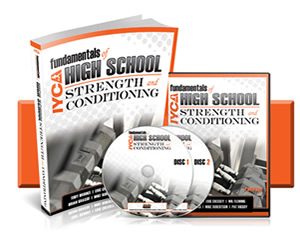In this article & video I go over the ways that I personally coach each of the 3 squatting variations I chose. I  understand that some of these may be done by other coaches, and while I respect other coaches opinions, this article outlines how I personally like to coach these exercises.
understand that some of these may be done by other coaches, and while I respect other coaches opinions, this article outlines how I personally like to coach these exercises.
While most people think about the back squat as their top squatting variation, I’ve taken a slightly different approach in this article. Please don’t take my list to mean that I don’t love the back squat, but the three exercises I’ve listed are my personal favorites, and all of them give coaches plenty of ways to coach, assess, and progress. I’ve also decided to choose three different bilateral movements because I wanted to stick with bilateral variations rather than get into all of the unilateral options that can be done. Of course, I love unilateral squat variations, but I stuck with my Top 3 favorite bilateral options here.
Front Squat
The first exercise in this video is the front squat. As mentioned in the video, this is a great exercise because you get so much from just one movement. Challenging core strength, posture and position while strengthening the lower body. The front squat is the first squat variation, other than a goblet variation, that I utilize with my athletes, because it truly develops great movement mechanics and understanding of an upright posture with a barbell while squatting.
Barbell Box Squat
The second exercise I go over is the barbell box squat. This is an exercise that can be done so many ways, but I cue my athletes to maintain tension in the core and legs throughout the entire exercise. This can be a great progression exercise when dealing with an athlete struggling to reach depth. Have the athlete start at a higher box height as shown in the video, and then progress them downwards by using lower boxes or pads to change the height they are squatting to. Controlling the movement down to the box, pausing slightly above the box maintaining tension, then exploding out is a great way to incorporate speed training into a squat pattern.
Overhead Squat
The third exercise is an overhead squat. I understand that this is potentially the most advanced squat variation, and I do not use this very often in my programming, but it is another exercise that you can get a lot out of if done correctly. This challenges posture and position, upper body strength and stability. This can be used as an accessory exercise or in a warm-up if performing movements like the snatch. It can also be utilized as an assessment as explained in the video. If programming this for your athletes, ensure that they have good quality movement before loading the exercise itself.
Look for more Top 3 lists soon. In the meantime, give these a try in your programming.
 Jordan Tingman – CSCS*, USAW L1, ACE CPT, CFL1 is a graduate of Washington State University with a B.S. in Sports Science with a Minor in Strength and Conditioning. She completed internships with the strength & conditioning programs at both Washington State University and Ohio State University, and is currently a Graduate Assistant S & C Coach at Eastern Washington University.
Jordan Tingman – CSCS*, USAW L1, ACE CPT, CFL1 is a graduate of Washington State University with a B.S. in Sports Science with a Minor in Strength and Conditioning. She completed internships with the strength & conditioning programs at both Washington State University and Ohio State University, and is currently a Graduate Assistant S & C Coach at Eastern Washington University.
The IYCA High School Strength & Conditioning Specialist is the only certification created specifically for coaches training high school athletes. The course includes several hours of video instruction (including a complete Olympic lifting instructor course) and two textbooks with contributions from some of the top strength and conditioning coaches in America. Click on the image below to learn more about how to become a certified high school strength & conditioning coach.

